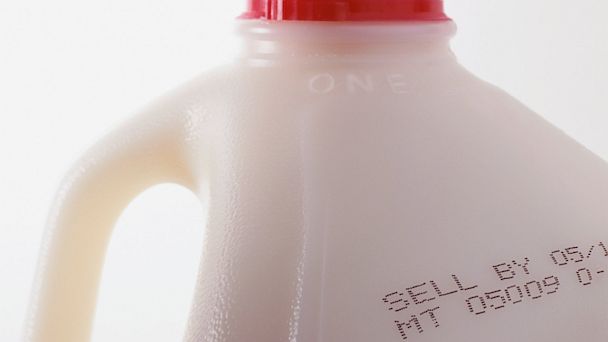Get the 'Real Answers' on What Those Food Expiration Labels Mean
ABC News' Cecilia Vega reports:
If you think you need to throw out the food in your fridge after the expiration dates have passed, think again.
See below for some foods and their shelf lives, according to the USDA
"I don't think we can really pinpoint a single food safety incident that happened because a food product was past its date," said Jena Roberts, vice president of business development at the National Food Lab.

Getty Images
The only food that federal law says must have a use-by date is infant formula. Some states also have their own rules on dates for foods such as milk.
Want to make groceries last longer? Check out "Real Money" secrets to ending food waste and saving thousands of dollars.
Roberts said the rest of the dates were voluntary, put there by manufacturers to tell consumers when the food tastes best, not when it's going to make a person sick.
"The 'use by,' the 'sell by,' the 'code dates,' the 'best by' dates - those are all there for quality reasons," she said. "They are not there for safety reasons."
Roberts said, however, that bagged produce such as spinach and lettuce should be tossed by the dates on the package.
"I would stick very, very closely to the 'use by' date," she said. "With lettuce, there isn't a heat step or a process to kill pathogens."
Roberts also said to follow the package dates for meat unless it is frozen. For eggs, she said they could be eaten up to three weeks past the date on the carton, as long as they are cooked all the way through.
Roberts also said to hold onto condiments such as mustard and catsup.
"Bacteria isn't going to grow in them. It's just a quality issue," she said.
According to the Department of Agriculture, it is OK to cut the mold off hard cheese, cured meats and hard vegetables such as bell peppers and carrots. Roberts said for dry and processed foods in the pantry, "the 'use by' date or the 'sell by' date for many of these products is anywhere from six months to possibly two years out."
Below, find additional foods and their shelf lives, according to the USDA. Every food product listed should be stored at a refrigerator temperature of 40 F and below for the following shelf life to pertain.
| Eggs | 21 to 35 days |
| Lunch meat | 14 days [unopened];3 to 5 days [opened] |
| Bacon | 14 days [unopened];7 days [opened] |
| Cured Ham | 5 to 7 days |
| Beef, Veal, Pork and Lamb | 3 to 5 days |
| Ground Meat | 1 or 2 days |
| Sausage | 1 or 2 days |
| Apples | 90 to 240 days |
| Grapefruit | 28 to 42 days |
| Strawberries | 5 to 7 days |
| Raspberries | 1 to 2 days |
| Grapes | 56 to 180 days |
| Carrots | 28 to 128 days |
| Cherries | 10 to 21 days |
| Asparagus | 10 to 20 days |
| Bunched Broccoli | 10 to 14 days |
| Celery | 3 to 5 days |
| Lettuce | 14 to 21 days |